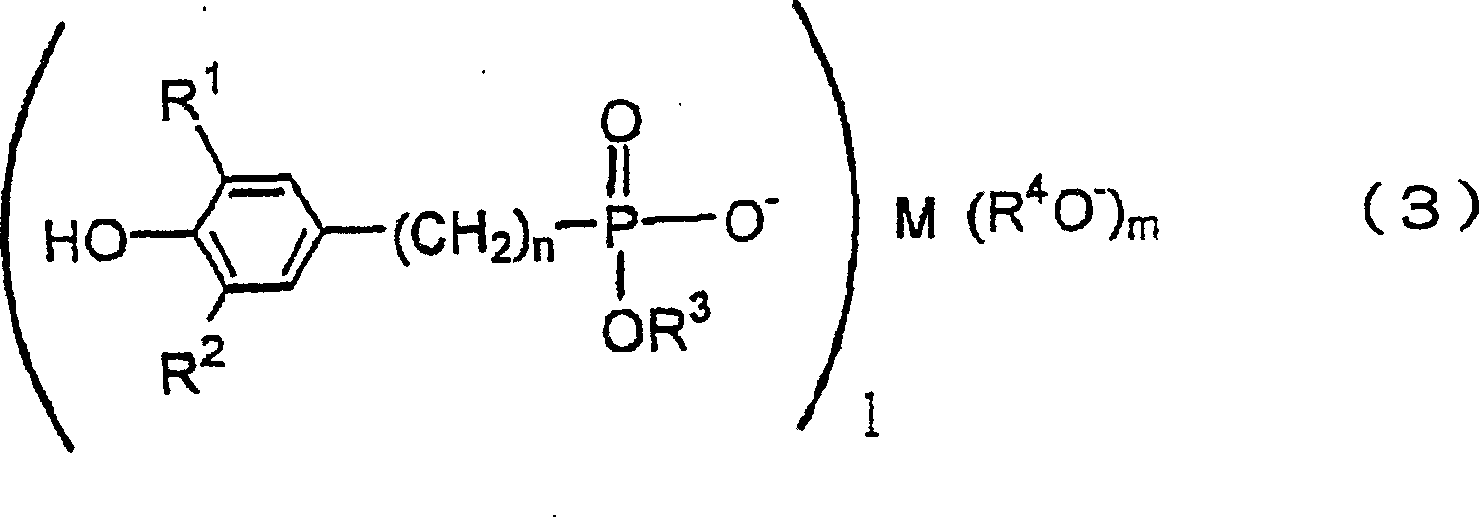Polyester catalyst for polymerization, polyester and method thereby
A technology of polymerization catalyst and production method, applied in the field of polyester and polyester production, which can solve problems such as difficulty in obtaining transparent hollow molded products, cap contamination, and decrease in productivity
- Summary
- Abstract
- Description
- Claims
- Application Information
AI Technical Summary
Problems solved by technology
Method used
Image
Examples
preparation example Construction
[0176] Production of the polyester of the present invention can be carried out using a method having conventionally known steps except for using the polyester polymerization catalyst of the present invention as a catalyst. For example, when preparing PET, it is possible to use a direct esterification method in which terephthalic acid and ethylene glycol and other copolymerization components are directly reacted as required, water is distilled off, and after esterification, polycondensation is carried out under reduced pressure; A transesterification method is used in which dimethyl terephthalate and ethylene glycol are reacted and other copolymerization components are added as needed, methanol is distilled off, and transesterification is performed, followed by polycondensation under reduced pressure. In addition, if necessary, solid-phase polymerization may be performed in order to increase the intrinsic viscosity, reduce the acetaldehyde content, and the like. In order to pro...
Embodiment
[0250] The present invention is illustrated by examples below, but the present invention is not limited to these examples. The evaluation methods used in the respective Examples and Comparative Examples are as follows.
[0251] [Evaluation method]
[0252] (1) Intrinsic viscosity (IV)
[0253] The polyester was dissolved in a mixed solvent having a weight ratio of phenol / 1,1,2,2-tetrachloroethane of 6 / 4, and the measurement was performed at a temperature of 30°C.
[0254] (2) acid value
[0255] Add 0.1 g of polyester to 10 ml of benzyl alcohol, and heat to dissolve. The acid value was calculated by titrating using a methanol / benzyl alcohol=1 / 9 solution of 0.1N NaOH.
[0256] (3) Diethylene glycol content (DGE)
[0257] In 2 ml of methanol, 0.1 g of polyester was thermally decomposed at 250° C., and then quantitatively measured by gas chromatography.
[0258] (4) Differential scanning calorimetry (DSC)
[0259] Measurement was performed using DSC 2920 manufactured by TA...
Embodiment 30~32
[0277] (12) Formation of thin films (except Examples 30 to 32)
[0278] In each of the Examples and Comparative Examples, the PET resin sheet for the melt test was vacuum-dried at 135° C. for 6 hours. Thereafter, it was supplied to an extruder, melted and extruded at 280° C. into a sheet form, taken out, quenched and solidified on a metal roll maintained at a surface temperature of 20° C., and an extruded film with a thickness of 1400 μm was obtained.
[0279] Then, the extruded film was heated to 100° C. with a heated roll set and an infrared heater, and then stretched 3.5 times in the longitudinal direction on the roll set with a difference in rotation speed to obtain a uniaxially oriented PET film. Then, stretch 4.0 times in the width direction with a tenter at 120°C, and heat the film at 260°C for 0.5 seconds with an ultraviolet heater in a state where the film width and length are fixed, and then perform 3% heating at 200°C for 23 seconds After relaxation treatment, a bi...
PUM
| Property | Measurement | Unit |
|---|---|---|
| thickness | aaaaa | aaaaa |
| length | aaaaa | aaaaa |
| width | aaaaa | aaaaa |
Abstract
Description
Claims
Application Information
 Login to View More
Login to View More - R&D
- Intellectual Property
- Life Sciences
- Materials
- Tech Scout
- Unparalleled Data Quality
- Higher Quality Content
- 60% Fewer Hallucinations
Browse by: Latest US Patents, China's latest patents, Technical Efficacy Thesaurus, Application Domain, Technology Topic, Popular Technical Reports.
© 2025 PatSnap. All rights reserved.Legal|Privacy policy|Modern Slavery Act Transparency Statement|Sitemap|About US| Contact US: help@patsnap.com



